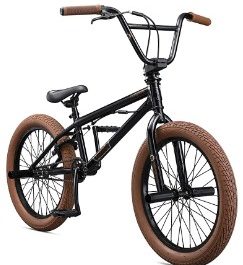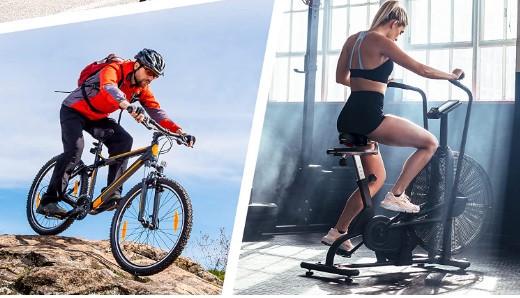Cycling has many health and fitness benefits for the body, and one of the fitness benefits is muscle toning. But what muscles does cycling tone?
Cycling tones your upper and lower body muscles. Some of the muscles that cycling tones include the calf muscles, thigh muscles, core muscles, arm muscles, glutes, and the muscles on the shoulder region.
But if you are still questioning if cycling tones muscles, let me clear the doubts first. Cycling is an aerobic exercise (resistance training) that helps tone your body muscles, especially the lower body muscles.
This guide will help you understand muscle toning and give in-depth research on the muscles that cycling tone. We will also answer a few questions regarding the topic.
Let’s get started!
But first, let’s understand what muscle toning is below.
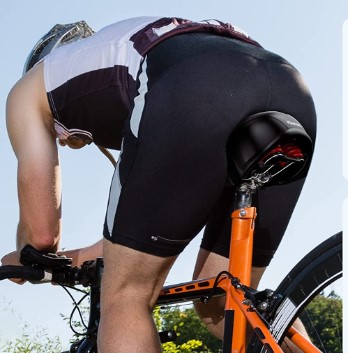
What Is Muscle Toning?
Muscle toning, though used interchangeably with muscle building, has different meanings. While the latter focuses more on bulking the muscles, the former defines the muscles for a lean physique.
So, muscle toning has a significant effect on your physical appearance, just like muscle building. But for well-toned muscles, you need to increase your cycling intensity and do more HIIT (high-intensity interval training) for 4 – 8 weeks.
What Muscles Does Cycling Tone?
Now, let’s focus on our main topic. We are going to look at the muscles that cycling tones. Let’s jump into it!
1. Calf Muscles
As stated earlier, cycling tones whole-body muscles, especially those on the lower body. One group of muscles of the lower body is the calf muscles.
Calf muscles are on the back of your leg. They comprise the soleus and gastrocnemius muscles. These two muscles are more involved as you pedal from bottom to top and collaborate with the hamstrings and quadriceps.
While the quadriceps muscles are primarily for down pedal strokes, the hamstrings, on the other hand, work harder on up pedal strokes.
As a result, the four lower muscles work harmoniously in each up-and-down pedal stroke, thus toning your calves.
In addition, to tone your calves maximally, ensure that you do other workouts when not cycling, like stair climbing and jumping rope.
2. Thigh Muscles
As stated above, the thigh muscles include the quadriceps and hamstrings and work in unison with the calf muscles.
While the quadriceps are on the thigh front, the hamstring is at the thigh rear. And when the quads are well-toned while cycling at the nine o’clock position, they cannot work independently without involving the hamstring muscles.
So, with each pedal stroke, the quads engage in a down stroke while the hamstring tone is in the upstrokes.
But for more definition of the thigh muscles, you can try some lunges, squats, and deadlifts while out of the saddle.
3. Core Muscles
Cycling engages and works on your core muscles. The core, often known as your body center, works intensively on the pelvic region, the abdominal area, the hip, and the diaphragm muscles.
The core muscles become fully engaged when tackling rugged terrain or any other challenging terrain, like riding on potholes and climbing hills.
Toning the core muscles has several advantages, including improved posture, injury prevention, balance, and pain management.
But how can you achieve a well-toned core? Ensure that you do some planks whenever you are out of the saddle. You can also tame your diet and do more fat-burning exercises.
4. Arm Muscles
Arms are part of the upper body. Two distinctive arm muscles (forearm muscles) include the biceps and the triceps muscles that, are most active during cycling.
Though the arms don’t thoroughly engage like the lower body muscles, they play a part in cycling, especially the forearms.
They improve riding stability, spinal support, comfort, and balance. When the rider shifts positions, leans, stands up at regular intervals, or performs crunches, this movement strains the upper body and helps build and tone the arm muscles.
But to engage and tone your arm muscles even more, you can do more cross-training and indoor cycling. Also, some exercises work more on the arms, including the dumbbell and kettlebell arm workouts.
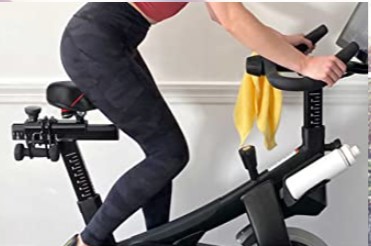
5. Glute Muscles
The glutes, often known as the buttocks, consist of three muscles. They include the gluteus medius, gluteus minimus, and gluteus Maximus at the back of the hips.
Cycling strains these muscles, especially when you cycle while standing. Still, if you sit upright, the hip travels through a broader range engaging the glutes.
So, if you are struggling with an uncomfortable seat, you can get one here (Check on Amazon) to help you sit upright when riding your two-wheel.
6. Shoulder Muscles
Lastly, we have the shoulder muscles, often known as the deltoids. When cycling while either standing, bending, or ducking, you put force on the shoulders, thus toning the deltoids.
They also collaborate in unison with the triceps and biceps giving you a more toned fore and upper arm.
That is more achievable when riding on challenging terrains where you apply more force on the bars, and that’s when the deltoids work most; thus, they develop and tone.
Effects of Cycling On Body Shape
Cycling works on both the lower and upper body. That means that cycling has a positive effect on your body shape.
First, cycling works best on your legs and thighs, and with intensive cycling, you get well-toned legs that are slimmer.
Since cycling also works on your abdominal muscles, it gives you a smaller, well-toned stomach, resulting in a flat stomach.
Moreover, cycling works on your core and gives you good posture and balance. Even better, regular cycling with good dieting can help you lose weight and attain a lean-looking body.
So, if you are looking for a leaner and well-toned body, you know what to do.
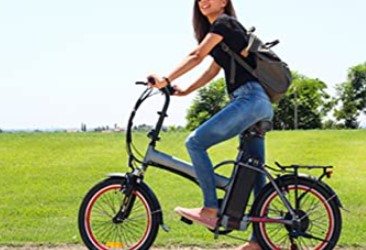
People Also Ask
1. How Does Cycling Tone Legs?
Without a doubt, cycling tones your lower body, especially the leg (calf muscles) and thigh muscles (the hamstrings and quadriceps muscles).
With each pedal stroke, the calf muscles (found at the back of the leg) stretch out harmoniously with the thigh muscles, giving you well-toned and thinner legs.
2. Does Cycling Tone Your Upper Body?
Though cycling works best on the lower body, it also engages the upper body. Some upper body muscles cycling tones include the shoulders (deltoid muscles) and the forearm (biceps and triceps muscles).
Note that with intensive cycling and combining HIIT and cross-training exercises, cycling also helps tone your core muscles, which include the pelvic region, abdominal part, and diaphragm muscles.
3. Does Cycling Tone Your Thighs and Bum?
Yes! cycling does tone your thighs and bum (buttocks). Your thigh muscles (the quadriceps and hamstrings) get involved in each pedal stroke you make, making them stretch and relax harmoniously. Involvement in more intense riding burns thigh fat, making them well-defined.
For the bum, a good saddle and riding upright put force on your bum region, and better still, the movement of the thighs moves the bum, thus ensuring it gets to exercise. But for a tighter and well-toned bum, you can cycle while standing or under challenging terrains.
4. Does Cycling Reduce Belly Fat?
Cycling tones the abdominal muscles. Thus, it helps in burning excessive and stubborn belly fat.
However, you must do more than cycling regularly for a well-toned belly. You need to cycle intensively and routinely and do other workout regimes.
Some workouts to involve yourself include embracing HIIT (high interval intensity training), taming your diet, doing more cross-training, and increasing your cycling intensity.
5. What Muscles Does Cycling Tone Up?
Cycling helps in toning the lower and upper body muscles. Though it works excellently on the lower body, it also involves the upper body.
These muscles include the calf muscles (soleus and gastrocnemius muscles), thigh muscles (quadriceps and hamstrings), core muscles (pelvic, abdominal, hip, and diaphragm muscles), arm muscles (biceps and triceps muscles), shoulder muscles (deltoids muscles), and glute muscles (gluteus medius, minimus and Maximus muscles).
In Summary, What Muscles Does Cycling Tone?
From the above guide, cycling tones the lower and upper body muscles. These muscles include the calf, thigh, core, arm, shoulder, and glutes.
However, ensure that you involve yourself with more workouts for a well-toned body. You can do some lunges, squats, cross training, HIIT (high interval intensity training), and remember to tame your diet.
